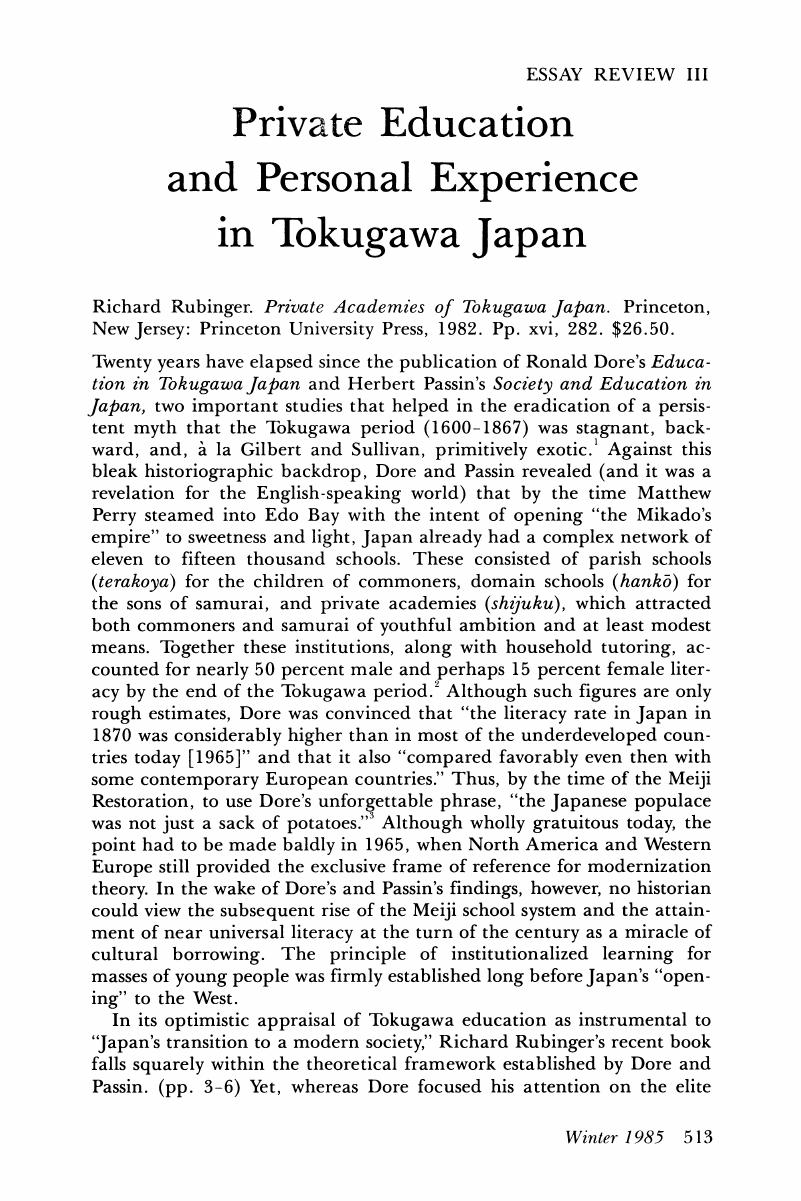No CrossRef data available.
Published online by Cambridge University Press: 24 February 2017

1. Dore, R. P., Education in Tokugawa Japan (Berkeley and Los Angeles, 1965); Passin, Herbert, Society and Education in Japan (New York, 1965).CrossRefGoogle Scholar
2. Passin, , Society and Education, 47–61. The literacy rate for females is especially problematic and dependent upon the whims of household tutors. Still, Dore estimates that by the time of the Restoration “about 10 per cent of Japanese girls were getting some kind of formal education outside of their homes.” Dore, , Education, 254.Google Scholar
3. Dore, , Education, 291, 294.Google Scholar
4. See, for example, Dower, John W., ed., Origins of the Modern Japanese State: Selected Writings of E. H. Norman (New York, 1975), 10–31, or, more recently, Wray, Harry and Conroy, Hilary, eds., Japan Examined: Perspectives on Modern Japanese History (Honolulu, 1983), esp. chapters 1–4.Google Scholar
5. The overwhelming majority of shijuku excluded women, but Rubinger notes, again in passing, that “small numbers of women are recorded at some schools.” (p. 12) One wonders what effect the presence of women students in a few schools had on their male peers.Google Scholar
6. The phrase, “institutionalized moratorium,” comes from Erikson, Erik, Identity, Youth and Crisis (New York, 1968), 157. For a more detailed discussion of the problem of adolescence (seishun) and the Meiji school system, see Roden, Donald, Schooldays in Imperial Japan: A Study in the Culture of a Student Elite (Berkeley, 1980).Google Scholar